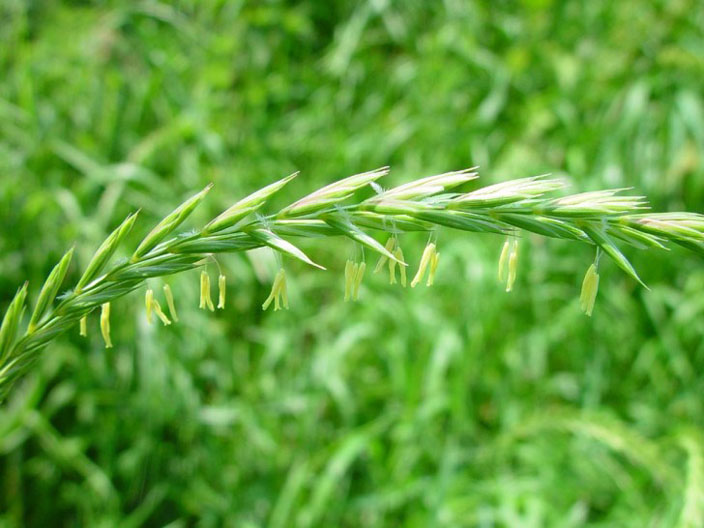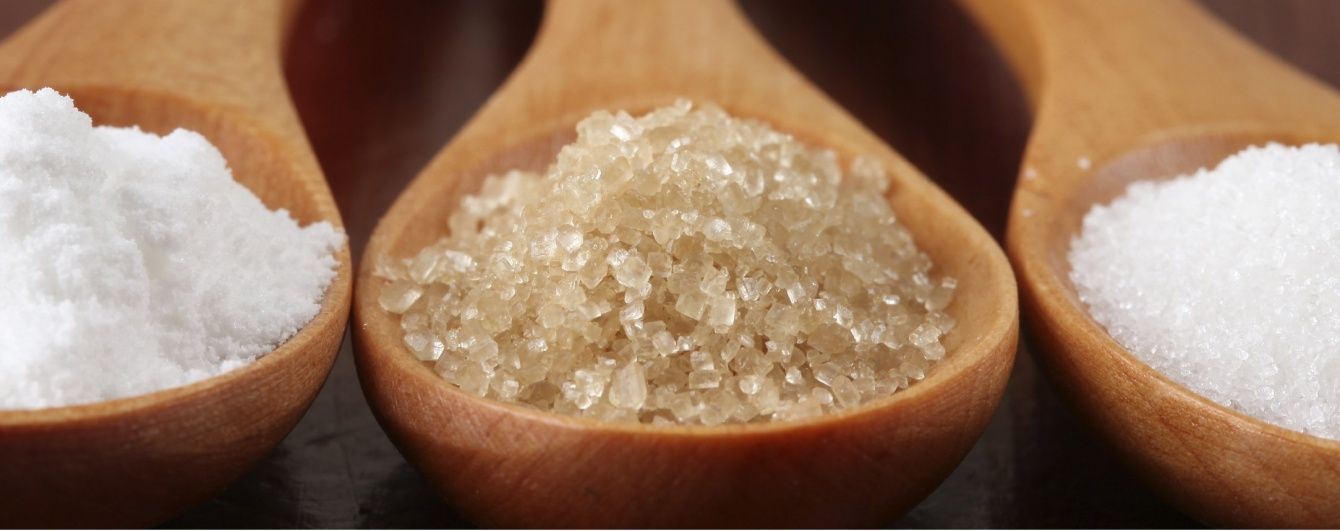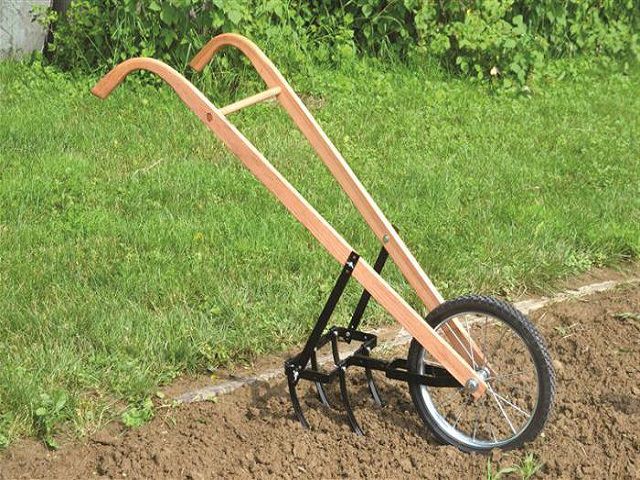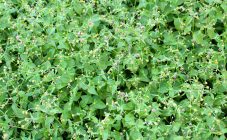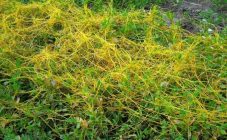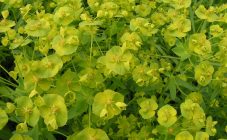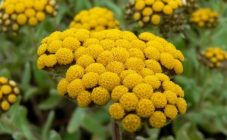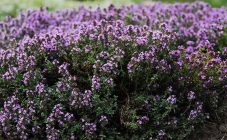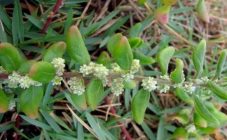Content:
Wheatgrass grass is a cereal crop, otherwise it is also called dog grass, duckweed, dandura, rye and worm grass. The root of the wheatgrass is long, with numerous shoots, which are located 15 cm deep in the ground. Leaves are flat, linear type, reaching up to 40 cm in length and up to 10 mm in width. The inflorescences of the plant are in a spikelet 2 cm in length. Wheatgrass fruits are seeds that are flat in appearance. They ripen from July to September. The plant grows in Europe, Asia and North Africa. As for the Russian territory, the weed grows almost everywhere.
Wheatgrass grass: how it looks, features and properties
The weed chooses the soils well-groomed and saturated with fertilizers, loves vegetable gardens. He can live in mountainous areas, but most of all prefers lowlands of the swampy type. Wheatgrass reproduces in two ways: vegetatively - by dividing the rhizome, sexually - by spreading the seed. Each method is effective, wheatgrass grows over large areas at high speed. It can spread more than 250 million root shoots per hectare, which quickly germinate and multiply.
The flowers of the plant tend to pollinate, after which they form a new variety that is able to withstand harsh weather conditions. In emergency situations, the seeds close in scales and can be dormant for up to 12 years. After that they can ascend again.
At a temperature of 4 ° C, rye grass begins to grow. When it reaches 25 ° C, it picks up its maximum reproduction rate. When more than 3 large leaves appear, the weed begins to actively spread roots.
Culture properties
Basically, creeping wheatgrass is a weed that prevents fruit crops from growing and developing. What wheatgrass weed looks like, everyone knows from childhood.
However, the weed is considered useful because it contains:
- essential oils;
- malic and lactic acid;
- fructose;
- starch;
- inulin;
- mineral components (Na, Ca, Zn, Mg, Fe, Mn, K);
- vitamin C;
- carotene.
Wheatgrass medicinal is widely used in folk medicine for many diseases.
- It copes well with cystitis and other inflammatory processes in the genitourinary system.
- Wheatgrass is used for diseases of the gallbladder and other diseases of the gastrointestinal tract, for example, colitis, enteritis, gastritis.
- Weed grass is also used as a laxative and normalizes the body's metabolism.
- The weed is indicated for anemia, colds and coughs.
- It is used during the treatment of tuberculosis.
- They make infusions for the treatment of skin diseases, osteochondrosis.
- They drink herbal infusions for the treatment and prevention of cancer.
As for humans, people with allergic reactions should use wheatgrass with caution. It is not recommended to give it to children under 2 years of age. It is better to stop using the herb during pregnancy and lactation. There are no more contraindications. If the dosage is observed, creeping wheatgrass cannot cause harm.
Wheatgrass is harvested starting in August and ending in September. There is another type of weed - grass that looks like wheatgrass, but you do not need to confuse it so as not to harm the body. For medicinal infusions, only rhizomes should be selected, which are dried at 70 ° C or in the open air. After drying, the roots must be rubbed in the hands or in a special mortar. You can use the blank for no more than 3 years. After that, the raw material does not deteriorate, but loses its healing properties. It is best to store the herb in glass containers with a tightly sealed lid.
For animals, this weed is a delicacy, so farmers often harvest it for eating cows, goats, and pigs. Sometimes the grass is grown specifically to prepare hay for livestock.
How to get rid of grass mechanically
If wheatgrass appears, and it is undesirable on the territory of the garden plot, then a plan to combat it should be thought out as early as possible. The most affordable and proven method is mechanical. It is applied in several stages.
- The plot is plowed in the autumn. It must be done twice: the first time to a depth of 12 cm, and the second time (after 7 days) to a depth of 20 cm.
- If the area is small, you can dig out the roots by hand. You cannot use a shovel for digging, it can cut the roots, thereby spreading the wheatgrass even more. For this, a pitchfork will be an excellent attribute. The wheatgrass bush must be carefully dug up, shaken off the ground and taken out of the site.
- Weeding regularly.
- If the whole area is covered with wheatgrass, it is best to use a cultivator. They need to chop the grass and rhizomes so that new shoots with a small root system emerge. They are easily removed.
Such methods are effective, but if quick cleaning of the garden area is required, it is better to use various chemical preparations in a complex manner.
Weed control preparations
Chemicals are prized among gardeners because of their speed. Their disposal efficiency reaches 95%. Wheatgrass creeping is afraid of cletodim, so you should purchase funds based on it.
The most popular remedies for worm-grass control.
- Roundup is considered a low-toxic and universal drug. It is sold in liquid form. The decay period in the ground takes up to 2 weeks.
- If you treat the site with Hurricane Forte, then all the weed grass will die in 10 days. There is no need to worry about fruit crops, it does not harm them. It is best to carry out the treatment before planting, as well as after harvesting.
- Agrokiller is considered the most toxic, so it must be used with caution next to vegetable crops. You need to scatter the product before planting vegetables for 2-2.5 weeks.
- The drug glyphos is used both in the autumn and in the spring. In addition to the detrimental effect on weeds, it also affects cultivated plants. Therefore, processing must be carried out 3 weeks before planting.
- The tornado pesticide is intended for a single application before planting for 14 days. Not toxic to humans.
Before buying weed poison, you need to consider a few nuances. If you want to destroy all vegetation on the site, then it is best to purchase solid preparations. If you want to exterminate a specific type of weed, then the remedy must be selective. Also among the pesticides there are universal and cereals. The former are suitable for all types of weeds.
Folk remedies
Folk methods are also popular with gardeners.
- If several young wheatgrass sprouts have appeared on the site, then a solution of soda and water will cope with them. They need to water the plant.
- Young shoots can be quickly burned out with a blowtorch.
- Another way to eliminate the weed is to prepare a solution of hot water and citric acid (for 1 liter, 3 tablespoons). Spray the plant with this mixture.
- Gardeners often use a vinegar solution. To do this, you need to take 4 liters of 15% vinegar, 0.5 tbsp. salt, 1 teaspoon of dishwashing detergent. Get up early in the morning and spray the plant after the dew has melted. It should be remembered that this method is temporary, it only affects the upper part of the grass.
After the entire area has been treated, preventive measures must be followed. There is no need to use foreign soil brought from other sites. It may contain millions of seeds or dormant wheatgrass roots. If there is a compost pit or a heap in the country, then it is categorically impossible to put the remains of the weed into it in order to prevent the soil from re-clogging.
Thus, wheatgrass can both help in treatment and harm the garden. To grow it or not, each gardener decides for himself. If the herb is needed to treat ailments, then you should familiarize yourself with how to collect it correctly. If, on the contrary, it is unusable on the site, then it is recommended to use "chemistry" and folk remedies. In any case, the article will become a cheat sheet not only for a novice gardener!
